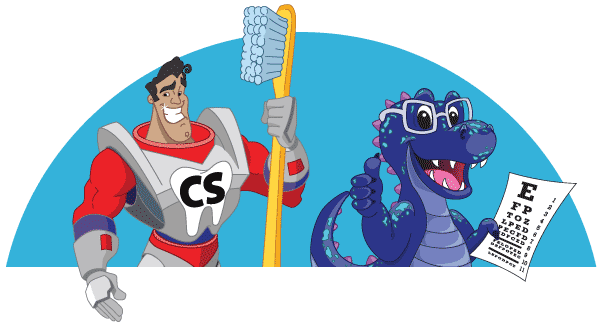Medicaid Dental Care for Kids
Braces and Orthodontic Care

Since Medicaid covers procedures that are medically necessary, orthodontic treatment is could be covered for children. If your child has an underbite, overbite, crossbite or severe crowding it might be time to consider braces for kids with Medicaid.
Orthodontic Evaluation
When a dentist that accepts Medicaid conducts an orthodontic evaluation on your child, they will determine a recommended treatment plan. As part of this, they assess whether Medicaid is likely to cover the orthodontic treatment or not. Medicaid knows that braces can be an important treatment to ensure lifelong oral health for kids. As a dentist that accepts Medicaid, we will manage the full Medicaid approval process which includes submitting the appropriate documents and patient records. Then, Medicaid examiners will look at what we submitted and determine if your child’s recommended orthodontic treatment will be covered. Medicaid will notify you and our office if the treatment is approved or declined.
The American Association of Orthodontists recommend children receive their first orthodontic screening by the time they turn 7. At this age, major jaw and tooth alignment problems will be visible. As with any health intervention, the earlier a problem is identified, the easier it is to create a treatment plan and schedule. Some issues that are treated by braces include:
- Overcrowding of teeth
- Open bite (upper and lower lines of teeth do not meet each other in the middle of the mouth)
- Crossbite (upper and lower teeth do not line up evenly with each other)
- Overbite and underbite (upper jaw is larger than the lower or vice versa)
Benefits of Braces
If your child needs orthodontic treatment, it will be an improvement that will last a lifetime. Braces fix more than crooked teeth to create a winning smile. In addition to straightening out your child’s teeth, braces also correct bite and tooth alignment. This is important to:
- Improve your child’s ability to chew food
- Help correct speech issues
- Make teeth easier to take care of so your child will have less tooth decay and gum disease
- Reduce the potential for chipping or grinding teeth and other injuries that could be caused by protruding teeth
Kinds of Orthodontic Treatment Available for Kids with Medicaid
Today, braces are more comfortable than ever before.
Traditional metal braces have brackets that are glued to the tooth with special tooth glue. These are also the most affordable type of orthodontic treatment and remain the most popular orthodontic treatment for children. Metal braces are easy to accurately adjust at each appointment in order to align your child’s teeth. Most kids love that they can select the color of elastic band to put on the bracket and swap it out each appointment.
There are other options for braces that are less noticeable than the metal brackets. Some of our older patients like that ceramic or porcelain braces blend in with their teeth. There are also clear braces, but these are more expensive than metal braces and can discolor if not cleaned regularly. Then, there are removable aligners such as Invisalign®. These are transparent trays that can be removed during mealtimes. Removable aligners are popular with adults and older kids, but they aren’t appropriate to treat significant bite problems. We don’t recommend removable aligners for most children because they require more responsibility to care for properly.
Sometimes, the orthodontist will recommend two phases of braces depending on the developmental stage of a child’s teeth. The first phase might begin around age 7 to 10 years of age to correct issues with your child’s primary teeth that could impact the arrival of permanent teeth. During this time, the jaw bones and palette are more pliable.
Around the age of 12, a second phase might be recommended. These braces straighten out the permanent teeth. The time your child will be in braces is dependent on their treatment plan and how well they follow the orthodontist’s instructions. It can range from 9 months to 30 months.
Ultimately, braces will help your child’s jaw and teeth to be properly aligned which results in improved oral health, speech and chewing.
Caring for Braces
When your child has braces, it can be more difficult to brush and floss teeth properly, but it’s very important. Encourage your child with braces to rinse their mouths with water frequently. This helps wash away food particles and restore the pH levels in the mouth to neutral. Acidic foods can wear away tooth enamel.
When your child wears braces, we suggest they brush their teeth after every meal. Your child should pay special attention to their gum line and then focus on brushing above, below and on each bracket. Flossing daily is also critical especially when your child has braces.
There are certain foods that your child should not have when they wear braces.
- Your child should not chew on ice, popcorn or hard candies. Hard or crunchy foods should be eaten with caution.
- Sticky, chewy foods such as taffy, caramel, chewing gum and other gooey treats can cause damage to braces.
- Limit intake of sugary or starchy food since properly caring for teeth to prevent decay is more challenging during orthodontic treatment.
Be sure to schedule your child’s dental cleanings and exams every six months. Even kids who do a great job of caring for their braces can experience more plaque during orthodontic treatments.

